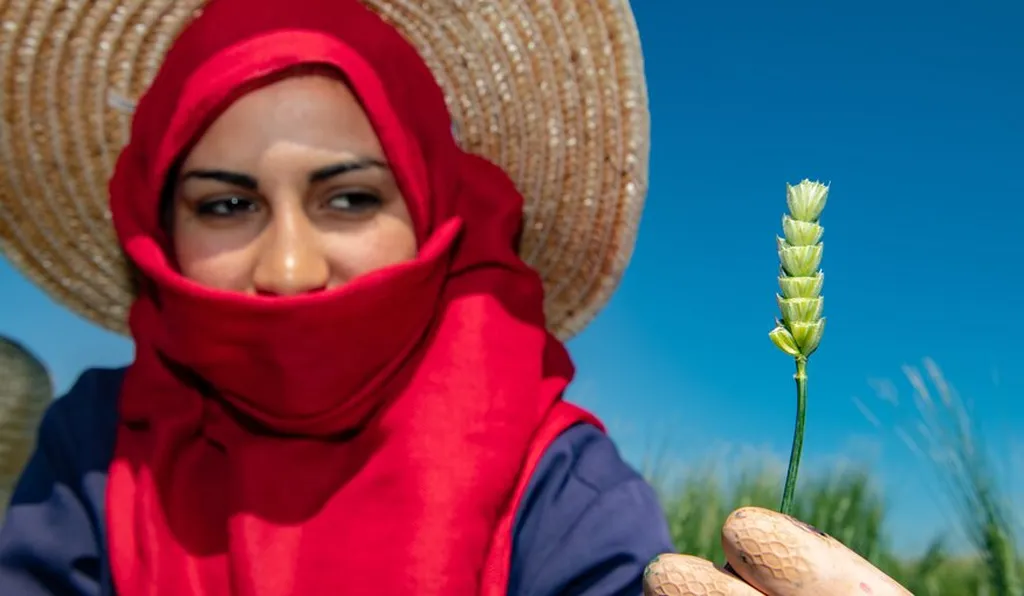In the heart of Gujarat, India, a team of researchers led by Harshvardhan N. Zala from the Department of Agricultural Biotechnology at Anand Agricultural University has been delving into the intricate world of wheat genotypes, seeking to understand their responses to drought stress. Their findings, recently published in the ‘International Journal of Bio-Resource and Stress Management’, offer promising insights that could significantly impact the agriculture sector, particularly in arid and semi-arid regions.
The study focused on evaluating the tolerance of wheat genotypes to drought, a critical factor that can make or break crop yields. To simulate drought conditions, the researchers used polyethylene glycol (PEG) at varying concentrations. “We observed a decrease in germination percentage with the increase in PEG levels,” Zala explained. “However, some genotypes showed remarkable resilience, maintaining higher germination rates even under stress conditions.”
The research team recorded data on various physiological and biochemical parameters, including root length, shoot length, seedling vigor index, and proline content. They found that as the concentration of PEG increased, there was a reduction in germination percentage, root length, shoot length, and seedling vigor index. However, the proline content increased under stress conditions, indicating its role in drought tolerance.
One of the most intriguing aspects of the study was the analysis of isozyme patterns. “We observed specific banding patterns for peroxidase and catalase that appeared only after PEG-induced stress,” Zala noted. “This suggests that these enzymes play a crucial role in the wheat plant’s response to drought.” The study also identified specific protein bands induced under drought stress conditions, which could be key to understanding and enhancing drought tolerance in wheat.
The findings have significant commercial implications for the agriculture sector. With climate change exacerbating drought conditions in many regions, developing drought-tolerant wheat varieties is more important than ever. The genotypes identified as highly tolerant, such as LOK-1 and HW-2004 among the irrigated aestivum genotypes, and A-206 and AR-06-1 among the rainfed durum genotypes, could be valuable resources for breeders aiming to develop new, resilient wheat varieties.
Moreover, the study’s insights into the biochemical and physiological responses to drought stress could pave the way for innovative agritech solutions. For instance, understanding the role of specific proteins and enzymes in drought tolerance could lead to the development of biotechnological tools for enhancing crop resilience. This could include genetic engineering approaches to introduce or enhance the expression of these protective proteins and enzymes in wheat varieties.
The research also highlights the importance of screening and characterizing wheat genotypes for drought tolerance. As Zala pointed out, “Our study provides a foundation for further research into the mechanisms of drought tolerance in wheat. It also underscores the need for continued investment in agricultural research to address the challenges posed by climate change.”
In the broader context, this research could shape future developments in the field of agritech, particularly in the area of crop improvement. By identifying the genetic and biochemical basis of drought tolerance, researchers can develop more targeted and effective strategies for enhancing crop resilience. This could include not only traditional breeding methods but also advanced biotechnological approaches, such as CRISPR-Cas9 gene editing.
Furthermore, the study’s findings could inform the development of precision agriculture tools and techniques. For instance, understanding the specific conditions under which certain wheat genotypes thrive could enable farmers to make more informed decisions about crop selection and management. This could lead to more efficient use of water and other resources, ultimately improving crop yields and farm profitability.
In conclusion, the research conducted by Zala and his team offers valuable insights into the complex world of wheat genotypes and their responses to drought stress. Their findings have significant implications for the agriculture sector, particularly in the context of climate change and the need for more resilient crop varieties. As the global population continues to grow and climate conditions become increasingly unpredictable, such research will be crucial in ensuring food security and sustainable agriculture.

